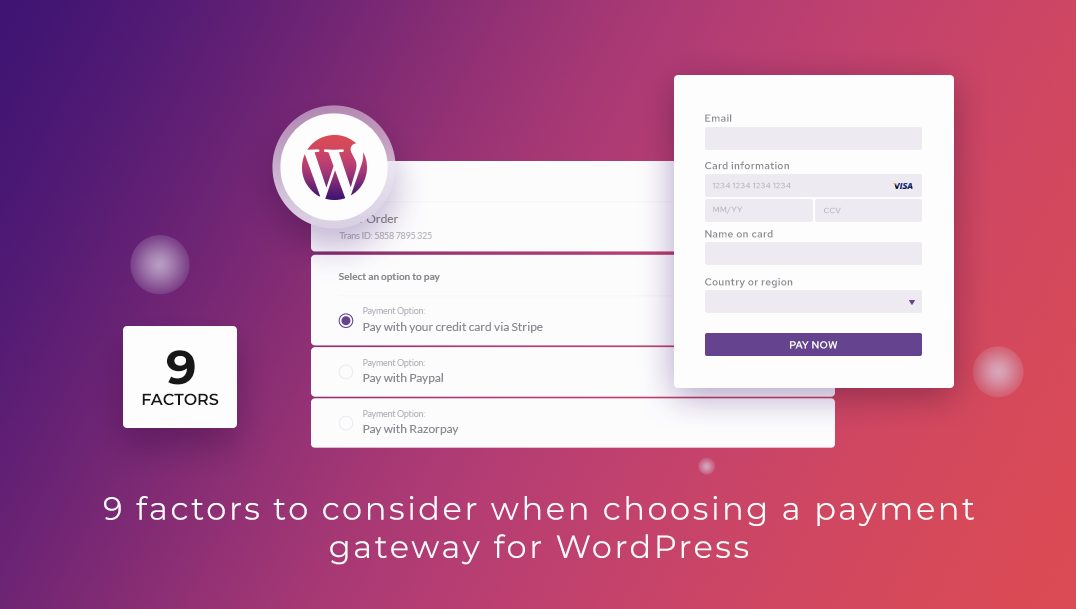E-commerce is on high. Sales are predicted to top $27 trillion in 2020. In other words, business is good. If you are looking to break into the scene this year, prospects look promising. On the other hand, if you have already built up a name for yourself in the world of ecommerce, you can always look forward to growing your business, implementing more efficient strategies and pushing down your bottom line some more.
The High Cost of Business
Your bottom line is important, a fact which I cannot stress too much, especially for startups. Given that as many as 75% of them crash and burn before they get off the ground, some very careful planning is warranted right from the get go. Now assuming that you have covered all your basics, from chalking out your niche to getting your SEO work done early on, you can potentially service your bottom line by improving your supply chain strategy.
If you have done your homework, you already know that the inventory led model of doing business is pretty cost intensive. Not only do you have to have capital locked away in your inventory, you also run the risk of bearing the additional cost of being ‘Out of Stock’ in terms of lost sales. On top of that, the true cost of your inventory is not merely limited to what you pay for purchasing it. You have to tag on the cost of insurance, taxes, financing, storage overheads and depreciation (obsolesce, damage, shrinkage) among other things. Taking most of these factors into account, the true cost of your inventory would go up by roughly 20-25% over and above the actual purchase price. Simply put, the capital infusion requirement is off the charts and therefore, liquidity becomes a fundamental operational problem for the inventory led model.
In keeping with what we have discussed before, maintaining liquidity parallel to keeping a healthy inventory may not be an achievable proposition for cash strapped startups. Even if yours is not a startup, it doesn’t make sense to give up liquidity in exchange for sellable stocks, especially during lean business cycles when cash is in short supply. So how do you get around this problem without going broke? One apparent solution is the marketplace model. However, if you value and wish to maintain your identity as a retailer with his or her own unique brand identity, this may not work for you.
Here drop shipping is a viable option. The idea of drop shipping specifically avoids those problems that come with maintaining your own inventory simply by eliminating the need to do so.
Drop Shipping – Under the Hood
Broadly speaking, drop shipping is a supply chain management technique primarily aimed at removing the need for an upfront inventory while creating a positive cash flow cycle. How exactly does it achieve all of that? First, you as a retailer partners up with a wholesale supplier who maintains his own inventory. Next, you list your items for sale in your own store. Once a customer comes in and places an order, you transfer the details along with shipping information over to your wholesale partner who ships it directly to the customer.
So right off the bat, you rid yourself of the need for maintaining an inventory by partnering up with a wholesaler who does. At this point, you have already freed up whatever capital you were going to invest in building up your inventory. Assuming that you have established a line of credit with your wholesaler, remittance cycles would be either on a weekly or monthly basis. However, for every order that you receive, your customer pays you upfront. This window of time between receiving payments from a customer and settling the bill with your wholesaler is what facilitates a positive cash flow. Simply put, drop shipping can enable you to achieve high liquidity on both fronts.
Drop shipping is neither new nor groundbreaking. Approximately 22-23% of online retailers in the United States use drop shipping as their primary mode of order fulfillment. Zappos used drop shipping extremely effectively, with as much as 25% of their sales coming by way of it. Although the company has graduated away from this model, Amazon and Sears still continue to use drop shipping as an active component of their supply chain. Case in point – 34% of products sold by Amazon in 2011 was by way of drop shipping. That equates to roughly $14.2 billion in sales. The furniture giant Wayfair has developed their entire business model around this methodology. As of July 2015, 51% of surveyed retailers in North America have already introduced drop shipping into their supply chain. Over the next 2-7 years, another 17% plan on implementing the process.
Calculating Rewards
On the subject of profitability and if it is feasible to actually make money by way of drop shipping, let’s look at some interesting numbers. A paper published in the Journal of Operational Research Society estimates that drop shipping retailers can earn 5.18% more profit as compared to their inventory maintaining counterparts. Drop shipping is good news for manufacturers as well. Since a retailer can stock only 13% of what an average manufacturer would like to sell, it puts an abrupt cap on potential sale volumes. Drop shipping removes that constraint allowing manufacturers to directly fulfill as many orders the retailer can source.
Apart from the case of liquidity that we have already discussed to death right at the start, drop shipping is certainly one of the easiest ways to get your fledgling eCommerce business off the ground. To begin with, you will be free of any costs related to stocking and warehousing. Neither will you be spending hours on the phone every day ordering more products to maintain your stock levels. Accounting becomes a relatively simple affair because there is neither an onboard inventory to track nor an extensive set of overheads to calculate.
Your next set of advantages comes by the way of (again) not having to do anything with packing, shipping, returns and inbound shipments. If you can leverage your wholesale partner well, he’ll take care of that part for you. Moreover, you can ask your wholesaler to ship discreetly using private labeling shipping which will use your/your brand’s name as the shipper ensuring that you don’t lose out on any brand exposure or equity. Shipping directly from the wholesaler to the customer also reduces the length of time it will spend in transit; faster shipping equals to happier customers.
Moving forward, you are likely to find that drop shipping allows you to offer a wider range of products to your customers while eliminating your exposure to the many risks of maintaining an expensive inventory of those products. This, in turn lets you effectively experiment, list, delist and discover the appropriate mix of products which your customer base is interested in.
Assessing Risks
In keeping with the spirit of Voltaire, Harold Demsetz, Professor Emeritus of economics at UCLA opined that there is no perfect solution to a particular problem, an idea which extends to drop shipping as well. It is not a perfect system and has its own set of risks to bear – one of the reasons why Zappos eventually moved away from the drop shipping model in 2009.
The choices Zappos made outlines two very important risks of the drop shipping model – that of fulfillment errors and the difficulty of syncing inventory. Like any self respecting eCommerce business that is worth a damn, Zappos prided itself on their commitment towards customer satisfaction. They did an admirable job with a drop shipped fulfillment rate of 95% which is an excellent number by most standards. However, that meant that drop shipping failed to fulfill at least 5% of the orders, in turn translating to a sizable number of unhappy customers – something which is poison to the reputation of any eCommerce business. Although initially dependent on third party inventory management, logistics and fulfillment services, Zappos eventually understood that a third party would not be in a position to care about customers the way the company did.
Another glaring difficulty with drop shipping is that more often than not, you will find yourself facing a gaping lack of information on the products you are trying to sell. Since you don’t maintain an inventory yourself, you are not thoroughly acquainted with their intimate details, something every customer looks for before making a purchase decision. There are 3 critical bits of information you need to begin selling a product – a comprehensive description, shipping weight and availability. Since wholesalers and manufacturers are not geared towards the whole eCommerce thing, you are likely to find yourself calling on them regularly, requesting them to send you so and so details. Once solution around this is to automate the process by setting up a database of unique product identification numbers, something that may be a little too time intensive to implement.
Lastly, and here is where the rub lies, order processing is something that you will need to handle by yourself because your supplier will depend on the information you provide in order to successfully ship the product to your customer. Prima facie, this might sound easy but as your business grows and you scale upwards, you are likely to find yourself working with multiple suppliers. Unless you have a common standard set up to handle order processing and billing across all your suppliers, you will find yourself in a complicated web of things. Consider this – since all your suppliers are likely to have different response times, you are going to find yourself making a call to each one of them just to confirm product availability for each order you receive.






